Employee growth has a lot of working parts. It can feel like an enormous challenge for HR teams, but there are actually a lot of little things you can do to strengthen employee growth. From rounding out skills to letting them get their hands dirty trying new things – it’s all about finding ways to find what your people are good at and create opportunities for employee growth. Adopting a “growth mindset” can make all the difference in this effort.
First, Some Homework
HR people are really into frameworks, so let’s set one up for discussing employee growth. To start, here’s a definition: Employee growth is “any activity that promotes the skill, experience, advancement, morale, engagement, and productivity of a worker.” A helpful way of thinking about opportunities is to find at least one initiative for each element of the definition.
But not just yet! As with any L&D program, you need to get organized beforehand. This means forming an employee growth strategy, complete with metrics and feedback mechanisms. This goes beyond a typical career development plan because it includes specific ideas for morale and related issues like job satisfaction.
Opportunities for Employee Growth Ideas
Homework complete? Great! Now, let’s look at the opportunities that you can grab to help your employees flourish.
Skills
Training workers in both hard skills and soft skills will create well-rounded professionals. Exactly which courses are supplied depends on the strategy that you build. But, in case you were wondering, here are some of the top skills in demand today:
- Leadership – It’s recommended to use leadership coaches to build soft skills such as self-awareness, empathy, change management, and strategic thinking.
- Management – Dealing with conflict through problem-solving on one hand, while encouraging relationship-building on the other, leads to strong and effective teams.
- Communication – This is an old favorite of L&D pros because everyone could use (at least) a bit of polish on the various types of communication.
Experience
Due to inconvenient truths like the forgetting curve, it’s always smart to back up skills with experiences that turn abstract concepts into reality. Enabling employees to try out different tasks will both exercise the skills that they have acquired, and give them a feel for roles that they might grow into. Examples of experiential opportunities include:
- Job rotation
- Job shadowing
- Stretch assignments
- Cross-training
Advancement
You would think that providing both skills and experiences to workers would naturally lead to internal mobility. But, in a situation that is frustrating for both employees and many HR people, fewer than a third of workers get to move up the career ladder. Even Dilbert understands this.
The effect on growth is obvious. Here is an impressive fact: when an organization has poor internal recruiting practices, employees are retained for approximately half the time compared to firms with a good record. It is the (tough) task of HR to nudge the organization towards doing more hiring from within.
Morale
Boosting morale is one of those HR missions that seem potentially endless. After all, every employee has their own preferences when it comes to satisfaction and dissatisfaction. But getting a feel for the most effective morale-building efforts can still be realized by measuring current levels; interviewing employees and managers about their desires; and then experimenting and assessing results. Some of the common initiatives for supporting morale are:
- Promoting work-life balance
- Job enrichment programs
- Reverse feedback
- Rewards and recognition
Engagement
In the midst of the “Act Your Wage” crisis, you’re probably up to date with the latest engagement concepts – but a review couldn’t hurt. Increasing engagement should be part of a larger career management strategy. In addition to the skills and experience that this step might recommend, a lot of employees hike their satisfaction rates and tend to move up in an organization more quickly, by taking part in a mentoring program. Don’t forget to encourage manager participation, and follow-up to ensure that the initiative is working.
Productivity
Most upskilling programs tend to make employees more productive, but there are actually initiatives that focus exclusively on this ability. Productivity skills increase workplace performance and include the ability to prioritize, manage distractions, and understand personal strengths and weaknesses. Through coaching, employees can also improve work/life balance so that they can be more prepared for a challenging workday.
A Growth Mindset
Maybe the best way to identify growth opportunities is to let employees participate in finding them. People and organizations with a growth mindset understand that there are no limitations to learning or related opportunities. For example, companies that use continuing professional development build an environment where growth is always going on. This means that everyone in the organization is constantly involved with self-improvement. What better way is there to nurture creative approaches to discovering avenues for growth?
With a growth mindset, it’s not just HR that’s on the lookout for expanding professional horizons. Practically everyone in the company can come up with ideas, perhaps for their own development, or for that of people on their team or circle of friends.
Go Beyond Growth with Growthspace
Employee growth programs are only one of the many L&D initiatives supported by Growthspace. No matter what skills are needed by an organization, Growthspace is the platform of choice to power all the essential aspects of development. From matching experts to employees, all the way through to final program measurement, Growthspace automates the entire talent development experience.
Ready to turn insights into impact?
















